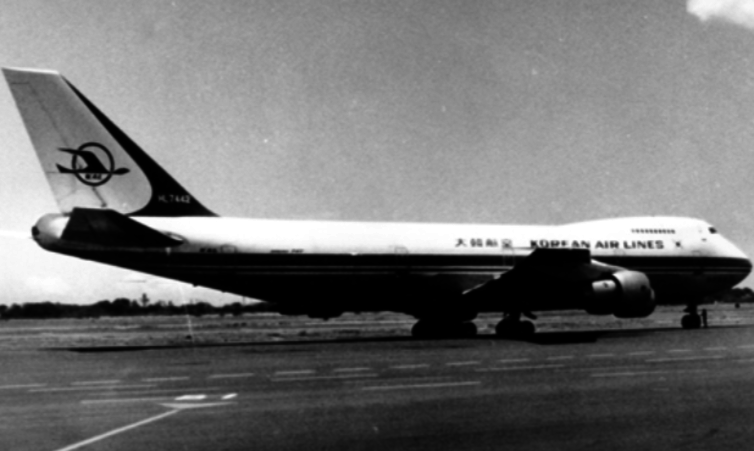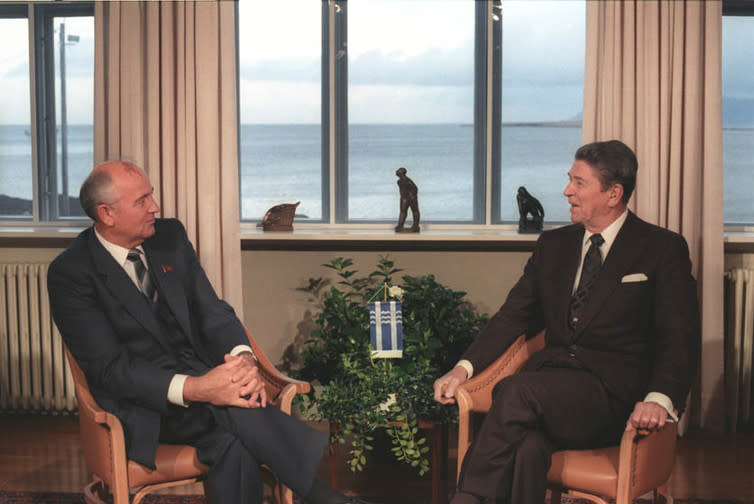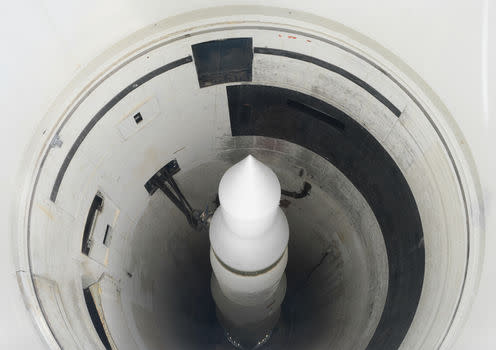How the Cold War led the world to the brink of nuclear apocalypse in 1983

This week saw the Russian Embassy in Britain Tweet a menacing message about a new Cold War, saying, ‘We are not afraid of cold weather.’
The Cold War saw tensions simmer for decades between Eastern Bloc countries and the Western powers – with an arms race that saw both sides stockpiling thousands of nuclear weapons.
On several occasions, tensions threatened to spill over into nuclear war – and one NATO training exercise in 1983 illustrates the chilling ease with which it could have happened.
The exercise – where NATO forces responded to a fictional Russian attack after conflict in Yugoslavia – was so realistic that forces within the Soviet Union became convinced a real nuclear attack was imminent, and responded with aircraft, missile crews and submarines, the CIA reported.

‘Able Archer’ involved 40,000 NATO troops, and real heads of state gave the orders, using the real communications systems which would have been used to launch a nuclear strike.
It was a ‘war game’ – but a highly realistic one, involving encrypted radio communications- and American aircraft practiced real nuclear warhead handling procedures.
Some aircraft came out of hangars carrying dummy warheads, according to a book on the incident, Able Archer 83 by the NSA’s Nate Jones.
Perhaps understandably, Warsaw Pact commanders became convinced that the NATO training exercise was actually a cover for a real nuclear surprise attack.
Panicked, Soviet forces began moving nuclear missiles to launch sites in Europe, and began readying aircraft for war, according to U.S. intelligence officials.
Dozens of Soviet reconnaissance aircraft took off, flying over the sea to monitor whether American naval forces were deploying to support Able Archer.

The Kremlin ordered a dozen aircraft in East Germany and Poland to be fitted with nuclear weapons.
Another 70 SS-20 nuclear missile crews were placed in high alert, and Soviet submarines carrying nuclear missiles were ordered to wait under the Arctic ice.
The reaction was ‘unparalleled in scale,’ according to Able Archer 83 by the NSA’s Nate Jones.
Helicopters took off to transport nuclear missiles from storage to their launch sites, Jones reports.
The preparations alarmed observers in the West – who later learned, via Soviet defectors, that the ‘training exercise’ had had unintended effects.
In Britain, Margaret Thatcher was briefed that the Kremlin considered the exercise a ‘real threat’.
Thatcher ordered her officials to ‘consider what could be done to remove the danger that, by miscalculating western intentions, the Soviet Union would over-react,’ according to The Guardian.
In both Britain and America, the incident led to a scaling back of ‘war games’ exercises, and helped catalyse moves to reduce tension with the Soviet union.

The Soviet leadership appeared to genuinely believe that America might launch an unprovoked first strike – something that surprised President Reagan.
In his memoir, Reagan wrote, ‘I think many of us in my administration took it for granted that the Russians, like ourselves, considered it unthinkable that the United States would launch a first strike against them.
‘But the more experience I had with the Soviet leaders and other heads of state who knew them, the more I began to realize that many Soviet officials feared us not only as adversaries but as potential aggressors who might hurl nuclear weapons at them in a first strike.’
A declassified Feb. 15, 1990, analysis by the President’s Foreign Intelligence Advisory Board, that the Soviet military was preparing to launch a nuclear strike and that relations were on a ‘hair trigger’.
It’s thought to be the closest the world came to nuclear armageddon since the Cuban Missile Crisis in 1962.
The declassified Feb. 15, 1990, analysis by the President’s Foreign Intelligence Advisory Board, said, ‘In 1983 we may have inadvertently placed our relations with the Soviet Union on a hair trigger.”
The report continued that it ‘strongly suggests to us that Soviet military leaders may have been seriously concerned that the U.S. would use Able Archer 83 as a cover for launching a real attack,’ and that ‘some Soviet forces were preparing to pre-empt or counterattack a NATO strike launched under cover of Able Archer.’

 Yahoo News
Yahoo News 

